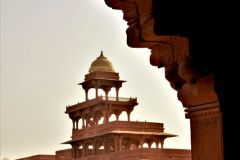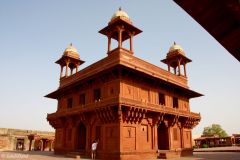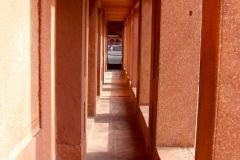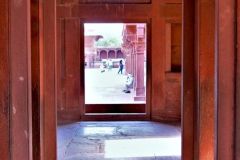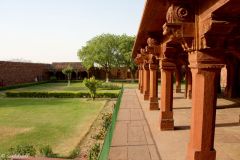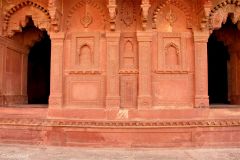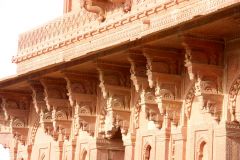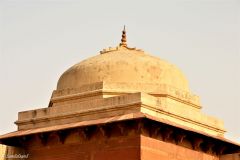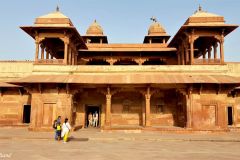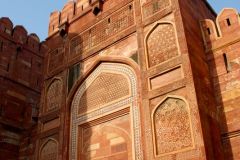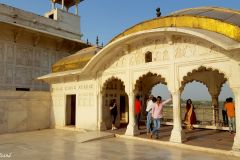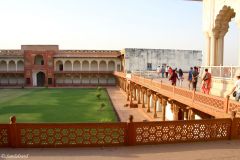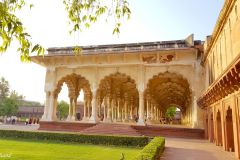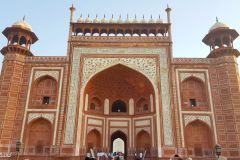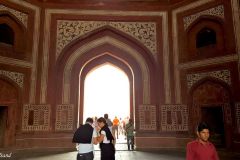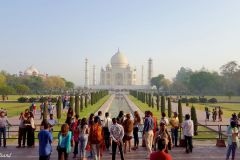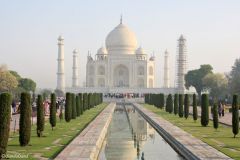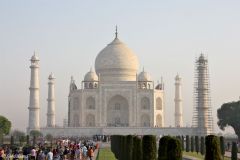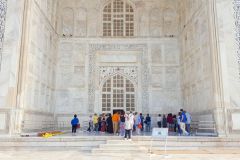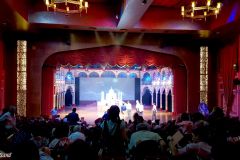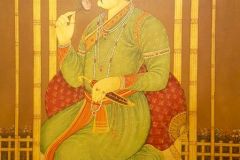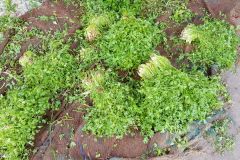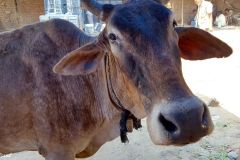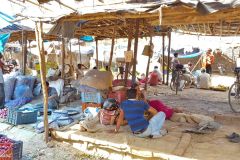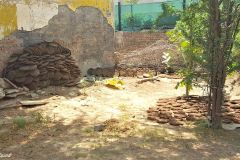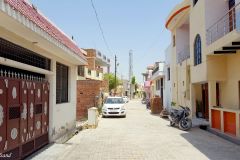There are many sights in Agra. The Taj Mahal, the famous mausoleum, is the main reason millions of people each year travel to Agra. It is truly astonishing, but I will in this article lay weight to more impressions I gathered during my two nights here.
I was on a tour of the Golden Triangle of India, stopping in Delhi, Jaipur and finally Agra. Like in the other articles my impressions from the sights in Agra are scarcely promoted in words, I am this time relying on pictures. Sometimes they speak larger than words.
Group tours will inevitably be concentrated on what was, i.e. events and buildings deeply nested in history and in particular the history of male rulers. This tour was no exception. Most of the headlines in this article will in fact deal with three World Heritage Sites. This means they are officially defined as being of outstanding universal value. The three are part of slightly more than a thousand sites around the globe chosen to represent the world’s cultural and natural heritage for future generations. I have no objections to making stops at these places, in fact I have more or less become a collector of them over the years. It is more that I would like to discover life among ordinary people too, as they live it today.
Fatehpur Sikri
Fatehpur Sikri is perhaps not recognised as one of the sights in Agra, because it lies outside. Still, it’s in the region and visitors should know about it. About 40 km west of Agra, on the main road to Jaipur, we find a city that was founded in 1571. It was destined to become the capital of the Mughal Empire and actually functioned as such for a few years before being abandoned.
Today it has a population the size of a village, but the old palace architecture remains and has been honoured by UNESCO as a World Heritage Site. It is like a ghost town, only enlivened by visitors arriving on tour coaches. The remains are very much worthy of the site’s Heritage status. These are not ruins but magnificent standing religious and secular buildings, a testimony to the high degree of craftsmanship – and financial resources – employed in the building of the city.
Read more
Read up on my special article about it, and find more images here:
World Heritage #0255 – Fatehpur Sikri: Imagine spending 15 years planning and building a brand new capital, only to abandon it after another 14 years. That is what the Mughal emperors of India did here.
Agra Fort
This is another World Heritage Site, this time inside Agra. The Mughal Empire used it as their capital and residence until they moved, once again, to Delhi in 1638. Inside the huge fortified wall we are guided between and into a number of palaces and other buildings. Most are built with the use of red sandstone, but some of the most beautiful are white marble. The large number of foreign visitors to the fort was during my visit completely outnumbered by Indians coming here for a stroll and a look into their own splendid past. This is a highlight among the sights in Agra.
Read more
You may read up on my special article about it, and find more images:
World Heritage #0251 – Agra Fort: Judging by the entrance visitors usually are led through, the monumental Amar Singh Gate, this is undoubtedly a fortress – even with a moat around it. As soon as we get inside that impression is reduced.
Taj Mahal
The Taj is of course the leading star among the sights in Agra. This is the physical manifestation of a fairy tale of love, twofold. First of all it is one of the world’s most iconic man-made structures, beautiful in all its white marble. Second it was built in grief over the loss of his favourite wife, as her mausoleum, by one of the Mughal emperors of India. It was finished in 1643 but work continued on the complex around it for another ten years. The emperor himself was laid to rest here as well, after his death.
The mausoleum stands on the embankment of the River Yamuna. It is possible to admire the Taj Mahal from across the river, and there is also a view of it from the Agra Fort. To get inside one must approach the large 17-hectare large walled complex from the city in the south. Everything is regulated, guarded and one will have to walk quite a bit. First there’s an entrance and ticket office, then one enters a large square with a lawn and the Great Gate. Behind the gate one eyes the Taj Mahal across a large formal garden. There is a museum to the left of the garden, and flanking the Taj there are two similar looking buildings, one of them being a mosque.
I did what most other people apparently did. That was to stop in awe inside the Great Gate, and walk up to the Taj through the garden. Then I continued around the mausoleum and finally into it. I returned, there is only one way in and out, on the perimeter of the garden. It was such a wonderful experience. And so think all 8 millions who come here each year.
Read more
You may read up on my special article about it, and find more images:
World Heritage #0252 – Taj Mahal: Built as a monument to the undying love and affection the emperor Shah Jahan had for his second wife, the Taj Mahal is one of the world’s most beautiful buildings.
Evening cultural show
A tourist’s odyssey to India and Agra in particular is not complete without a sound and light show with songs, dances and spectacular costumes. My group was bussed to the Kalakriti Theatre for a colourful evening performance. The play told, not surprisingly, the story about the emperor and his beloved wife. It was very good actually. Photography during the show was prohibited but here are a few taken afterwards.
Streetwise in Agra
I made some remarks in the beginning of this article about the limited opportunities offered on typical touristy group tours to venture around on one’s own or at least getting into the everyday life of contemporary Indians. For us at least, the program was very packed with little time to do anything else. In Agra I managed to slip away, into a nearby market to our hotel and also to jump on a rickshaw and then on foot into some of the neighbourhoods of Agra. I loved it. Here are but a few images.
What more?
Never mind which hotel we stayed in. We even ate there. The special articles to the World Heritage Sites have been mentioned and linked to above. The introduction to this vacation in India’s Golden Triangle too. The first article was about the first stop in the triangle, Delhi. The second was Jaipur. The one you have just read from Agra was the last.


